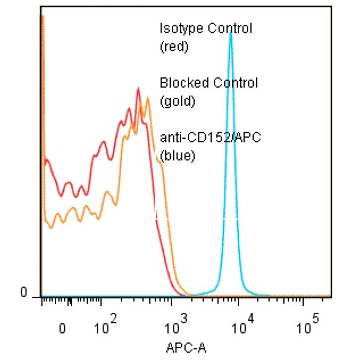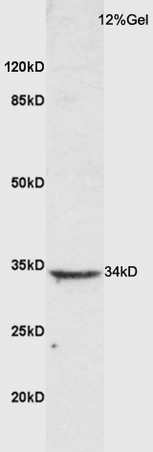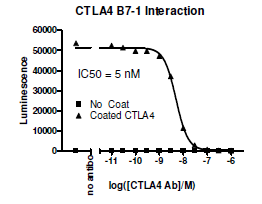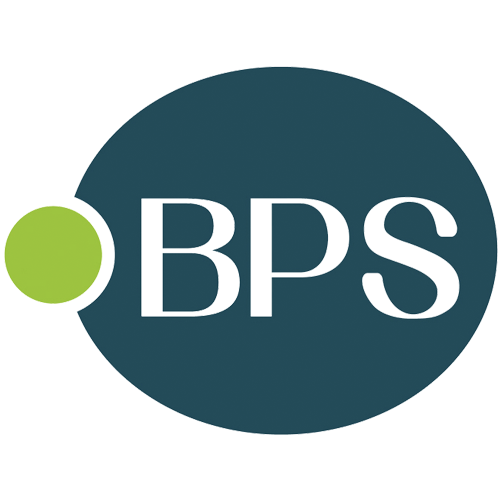
Binding of anti-CD152/APC to recombinant CD152-coated CML beads. Methods: Anti-CD152/APC was tested for binding to CD152-muIg-coated 4micro CML beads in FACS (Inquire). Five x 10^5 CD152-muIg coated beads per tube were spun down and incubated 45 min at 4°C with 80microl of anti-CD152/APC at a 1:50 dilution (10microg/ml). Tubes were washed twice, fixed and analyzed by FACS. Beads stained positive with a mean shift of 1.92 log10 fluorescent units when compared to a Mouse IgG1/APC Isotype control (#ANC-278-060). Binding was blocked when beads were pre-incubated 10 min with 20microl of 0.5mg/ml anti-CD152 antibody (#ANC-359-020).
anti-CD152 [CTLA-4] (human), mAb (ANC152.2/8H5) (APC)
ANC-359-060
ApplicationsFlow Cytometry, ELISA, Neutralisation/Blocking
Product group Antibodies
ReactivityBovine, Canine, Feline, Human, Porcine
TargetCTLA4
Overview
- SupplierAncell Corporation
- Product Nameanti-CD152 [CTLA-4] (human), mAb (ANC152.2/8H5) (APC)
- Delivery Days Customer10
- ApplicationsFlow Cytometry, ELISA, Neutralisation/Blocking
- CertificationResearch Use Only
- ClonalityMonoclonal
- Clone IDANC152.2/8H5
- Concentration0.5 mg/ml
- ConjugateAPC (Allophycocyanin)
- Gene ID1493
- Target nameCTLA4
- Target descriptioncytotoxic T-lymphocyte associated protein 4
- Target synonymsALPS5, CD, CD152, CELIAC3, CTLA-4, GRD4, GSE, IDDM12, cytotoxic T-lymphocyte protein 4, celiac disease 3, cytotoxic T lymphocyte associated antigen 4 short spliced form, cytotoxic T-lymphocyte-associated serine esterase-4, gluten-sensitive enteropathy, insulin-dependent diabetes mellitus 12, ligand and transmembrane spliced cytotoxic T lymphocyte associated antigen 4
- HostMouse
- IsotypeIgG1
- Protein IDP16410
- Protein NameCytotoxic T-lymphocyte protein 4
- Scientific DescriptionHuman CD152 (CTLA-4) is a cell surface glycoprotein expressed at low levels on activated T cells. CD152 is a high affinity receptor for the costimulatory molecules CD80 (B7-1) and CD86 (B7-2) and appears to function as a negative regulator of T cell activation. - Monoclonal Antibody. Antibody clone ANC152.2/8H5 reacts with an extracellular epitope of human CD152 (CTLA-4) expressed on activated T cells. It has been reported to cross-react with dog, pig, cow, and cat CD152. Isotype: Mouse IgG1kappa. Immunogen: Stimulated human PBLs and human CD152 Ig fusion protein. Applications: ELISA, FACS, FUNC (Blocking). Human CD152 (CTLA-4) is a cell surface glycoprotein expressed at low levels on activated T cells. CD152 is a high affinity receptor for the costimulatory molecules CD80 (B7-1) and CD86 (B7-2) and appears to function as a negative regulator of T cell activation.
- ReactivityBovine, Canine, Feline, Human, Porcine
- Storage Instruction2°C to 8°C
- UNSPSC12352203





